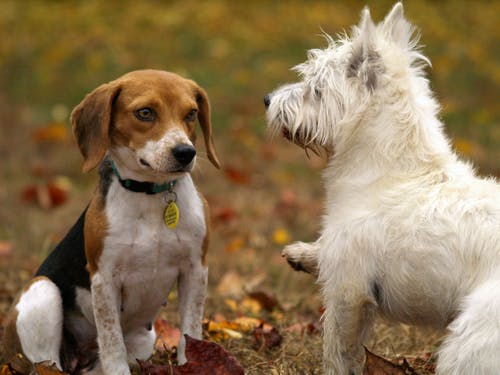Low-calorie diets are required for seniors and geriatrics to avoid obesity, a common problem among the elderly, and higher-fiber diets to maintain gastrointestinal health. However, many foods that humans usually digest, such as fruits and vegetables, may cause damage in a dog’s body, posing major health risks. On the other hand, some human foods may be safely incorporated into a dog’s diet and can give health advantages such as enhanced breath and allergy immunity.
Foods You Can Serve to an Elderly Dog
Bear in mind that even nutritious meals consumed in excess may lead to obesity in dogs, which is a serious health risk. Before you start feeding your senior dog your favorite foods, read on to learn which ones are safe and which ones will send your dog to the emergency doctor.
Bread
Most dogs can happily eat regular white or whole-grain bread as a reward. Before serving your dog bread, make sure it doesn’t include any potentially risky ingredients, such as raisins, which contain a poisonous substance that might harm your pet. Also, keep in mind that bread, like other meals, adds calories to your dog’s diet and may lead to weight gain if consumed in excess.
While most dogs are safe around bread, the dough may be fatal. The yeast in the dough may cause it to expand farther within the dog’s stomach, resulting in bloating and possibly dangerous complications. The yeast’s synthesis of ethanol may cause alcohol poisoning.
Geriatric care for dogs is also available at Family Friends Veterinary Hospital. Visit their website to learn more about how they can help your pet enjoy a longer and healthier life.
Green Peas
Green peas may be included in some dog diets. Green peas are a nutritious treat for your dog since they are low in calories and abundant in various nutrients. Your dog should be given fresh or frozen peas rather than canned peas. Canned peas include added salt, which is hazardous to dogs in excessive numbers.
Oatmeal
Oatmeal is high in fiber and vitamin, mineral, and antioxidant content. When given in moderation, Oatmeal may benefit a dog in many ways. It’s a great carbohydrate alternative for dogs that are sensitive to wheat. Oatmeal also includes vitamin B, which helps maintain a healthy coat, and linoleic acid, an omega-6 fatty acid that contributes to the strength and health of a dog’s skin.
It’s also rich in soluble fiber, which helps dogs with irregular bowel movements and blood sugar regulation. Giving your dog a high-fiber diet, on the other hand, may induce GI distress, including diarrhea and vomiting.
Broccoli
Broccoli is abundant in vitamins and minerals, low in calories, and high in fiber, all of which aid in the proper working of the digestive system. Broccoli is healthy for dogs to eat in any form. If you wish to serve your pet a piece of broccoli, do so before adding spices or other ingredients that may irritate their stomachs, such as onions or oils.
Both cooked and raw in little pieces are safe to consume. On the other hand, broccoli florets contain small compounds called isothiocyanates, which might cause gastrointestinal discomfort in your cat. As a result, it’s vital to portion broccoli for your dog correctly. If there is too much isothiocyanate in the florets, it may cause nausea, gas, bloating, and diarrhea. And if your dog consumes a lot of broccoli, the gastrointestinal troubles may become very worse, leading to significant health problems or even death. If your pet ate too much broccoli, get quick help from your trusted veterinarian.
Does your pet need a vet surgeon? Many surgical procedures for cats and dogs are offered at Family Friends Veterinary Hospital.
What should you do if your dog refuses to eat?
It’s typical for dogs to lose their appetites as they grow older. There are a variety of causes behind this. Some dogs, for example, suffer from nausea owing to gastrointestinal disorders, while others lose their appetite due to cancer.
Check with your veterinarian if your dog is refusing to eat to determine if there are any underlying health concerns, such as dental disease, diabetes, renal disease, or cancer. Warm water or chicken soup may be added to dry food to make it more appealing to dogs who have lost interest.
Health Problems Commonly Seen in Senior Pets: Click here if you want to read related content.








